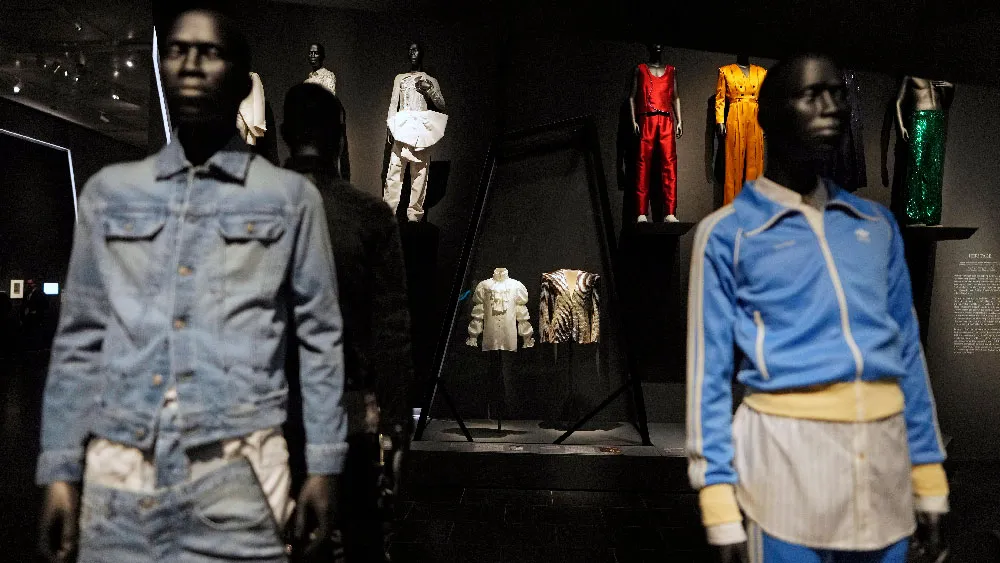July 22, 2015
Trans Murders Rise, But So Does Awareness
Kilian Melloy READ TIME: 4 MIN.
Transwomen of color face higher rates of violence than other populations
In May, London Chanel's roommate stabbed her multiple times, killing her during a fight in an abandoned North Philadelphia home.
Chanel's case became the eighth reported murder of a trans woman of color this year, and her death supports a trend of increasing media coverage of transgender murders. In the past trans murders were often ignored or the victims were misgendered. That was even more true for trans women of color, one of the most vulnerable segments of the LGBT population.
But now more and more trans people are appearing on television shows and in the news. This summer there are at least three trans-centric reality shows including E! network's "I am Cait," following Caitlyn Jenner's transition; ABC's "Becoming Us," following Ben Lehwald as his father transitions; and TLC's "I am Jazz," following 14-year-old transgender girl Jazz Jennings. This summer's edition of Big Brother also features its first transgender cast member Audrey Middleton.
Advocate groups say that one positive thing coming out of the rising number of reported murders is that it's raising awareness of transgender issues.
"Finally trans deaths are being reported as trans deaths in the media," said Osman Ahmed, the National Coalition of Anti-Violence Programs research and education coordinator. "Finally trans women and trans men are being reported in the media as trans. They're not being misgendered."
According to the NCAVP 80 percent of anti-LGBT homicides in 2014 were people of color and when looking at those numbers closer it shows 55 of homicide victims were transgender women, and 50 percent of those were transgender women of color.
The Anti-Violence Programs released a report in March detailing the various LGBT homicides so far in 2015 and urged the media to "respectfully and accurately identify victims of violence with names and pronouns in line with their current gender identity."
Ahmed said the reported deaths statistics though show a positive trend. They're a result of LGBT organizations and trans communities all over the county encouraging allies to use social media and other resources to advocate for trans lives being reported.
Ahmed points to the death of Chanel as an example.
"When the report came out, the reporter had misgendered London and called her a man," he said. "Immediately we saw community members, folks who knew and loved London Chanel, commenting on that article."
He said as a result, the reporter went back, checked the facts, changed the story and used Chanel's preferred gender identity pronouns and name.
An important tool in creating that change to the story, he said, and in changing the visibility and awareness of trans people is social media and the media in general.
"Folks in the trans community are really using social media to increase awareness around trans issues," he said. "Media recognition of trans folks like Laverne Cox and Caitlyn Jenner go a long way for increasing visibility and representation of trans folks."
The National LGBTQ Task Force created the Stop Trans Murders campaign to raise awareness and pull attention towards the severity of trans murders, pegging the hashtag #StopTransMurders.
"We see the national spotlight needs to be shown on the horrific violence to black men and women and trans women of color being killed as if they were not even human," said Kylar Broadus, the transgender civil rights director at the National LGBTQ Task Force.
The campaign also focuses on other problems transgender people face like job discrimination, harassment and unemployment.
"Until those problems are fixed, trans people of color, particularly transgender women of color, can continue to be prey on the streets," he said.
Broadus said it's our job as a community to stop that.
Ahmed said movements involving the hashtags #TransLivesMatter and #BlackTransLivesMatter are other ways of employing social media for real social issues.
"This is the first step in getting to the solution of the issue," he said. "It's a wonderful way to raise awareness about a real epidemic in the trans community which is the regular fatal violence in the trans community."
Jay Brown, the Human Rights Campaign Foundation's director of research and public education, said social media is a helpful tool in increasing coverage, but the root of the problem can only be solved with the help of public and private agencies.
"Social media coverage of these deaths helps boost visibility of the problem as many times these crimes go un- or under-reported," he said.
The HRC, in partnership with the Trans People of Color Collective, released an issue brief earlier this year, A National Crisis: Anti-Transgender Violence to highlight the critical issues facing the transgender community currently, which include poverty, unemployment, housing discrimination and barriers to healthcare.
"The report also issued several calls-to-action directed at both public and private agencies," Brown said.
Ahmed agreed, stating that visibility only goes so far.
"The real issues like low income ... won't go away by increasing visibility," he said. "Real change will come from policies that will speak to the issues that are affecting trans communities such as lack of access to appropriate health care, housing and shelter."
Ahmed and Broadus also suggest that one of the best ways to help the trans community is to speak up and get help for transgender people who might be in a harmful situation.
"We need to be very aware of [the less harmful aggressions] because they build up and can eventually lead to murder," Broadus said. "[Being transgender] impacts lives in so many ways from extreme poverty to suicide to health risks. If we impact transgender lives everybody's quality of life is improved."
Kilian Melloy serves as EDGE Media Network's Associate Arts Editor and Staff Contributor. His professional memberships include the National Lesbian & Gay Journalists Association, the Boston Online Film Critics Association, The Gay and Lesbian Entertainment Critics Association, and the Boston Theater Critics Association's Elliot Norton Awards Committee.




